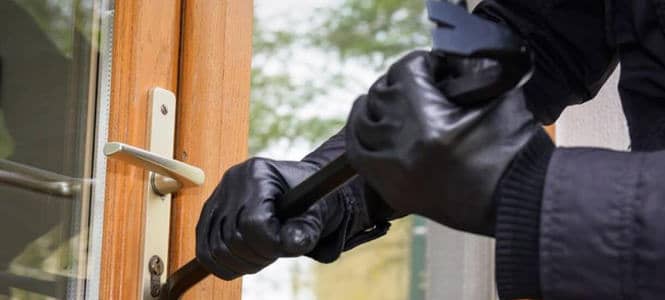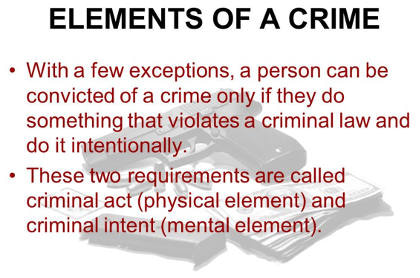
Under Penal Code 459, Burglary is the crime of entering a structure (whether residential, commercial, or another type of structure — i.e., a car) with the intent to commit a theft or a felony once inside.
PC 459 is broken down into “first-degree” and “second-degree” burglary:
First-degree Burglary is the burglary of a residence. It is a much more serious offense; and is a “strike offense” punishable by up to six (6) years in prison.
Second-degree Burglary is the burglary of a commercial structure and is a less severe offense. Second-degree burglary is a “wobbler” under California law; this means it can be filed as a felony or misdemeanor at the prosecution’s discretion. Second-degree carries a maximum of three (3) years in county jail on a felony charge or one (1) year on a misdemeanor charge.
The Burglary is considered complete once the suspect enters the structure with criminal intent, even if the intended crime is not actually carried out.
California PC 459 is commonly referred to as “breaking and entering”. However, the act of “breaking” into a structure is not necessary.
The critical factor/question is, when they walked through those open doors, did they have the intent to commit a felony?
Here’s how California defines Penal Code 459:
459.Every person who enters any house, room, apartment, tenement, shop, warehouse, store, mill, barn, stable, outhouse or other building, tent, vessel, as defined in Section 21 of the Harbors and Navigation Code, floating home, as defined in subdivision (d) of Section 18075.55 of the Health and Safety Code, railroad car, locked or sealed cargo container, whether or not mounted on a vehicle, trailer coach, as defined in Section 635 of the Vehicle Code, any house car, as defined in Section 362 of the Vehicle Code, inhabited camper, as defined in Section 243 of the Vehicle Code, vehicle as defined by the Vehicle Code, when the doors are locked, aircraft as defined by Section 21012 of the Public Utilities Code, or mine or any underground portion thereof, with intent to commit grand or petit larceny or any felony is guilty of Burglary. As used in this chapter, “inhabited” means currently being used for dwelling purposes, whether occupied or not. A house, trailer, vessel designed for habitation, or portion of a building is currently being used for dwelling purposes if, at the time of the Burglary, it was not occupied solely because a natural or other disaster caused the occupants to leave the premises.
The sentencing for first-degree Residential Burglary PC 459 is as follows:
The sentencing for second-degree Burglary PC 459 is as follows:
There are some exceptions to the sentences mentioned above:
Burglary PC 459 cases can be challenging for a prosecutor because they need to prove that the defendant had the intent to commit a felony before entering a structure. The “intent” is the problematic element in the case for the prosecutor; without the proven intent, there cannot be a burglary conviction.

To restate, burglary is defined as having the intent to commit a felony upon entering a structure. The state recognizes “entering” a building as when any part of a person’s body crosses the outer limit of a structure, or when an object that is under a person’s control crosses the outer limit of a structure, for example a crowbar or a hammer. The amount of time that either a body part or an object stays in that structure is not important.
It’s important to note that the prosecutor only has to prove that a defendant entered a structure with the intent of committing a crime; the prosecutor does not need to prove that someone actually committed the intended crime. For example, suppose a person is caught inside a store during closed hours with the aforementioned “burglary tools” (PC 466) but has yet to commit another crime. In that case, that person could be charged with PC 459.
Some cases are easier than others to prosecute. For example, an easier case would be the one mentioned above, if a person was caught with burglary tools inside of a closed store. A more difficult case to prove would be if a person was caught stealing a sweatshirt from a clothing store. The prosecutor would have to prove that the defendant entered the store with the intent to steal the sweatshirt and didn’t see the sweatshirt after he/she was inside the store and then decide to steal it. The decision of when to steal the sweatshirt is the difference between a PC 459 conviction and a petty theft conviction.
With the help of a talented criminal defense attorney cases can be dropped and charges reduced.

What makes convictions difficult for prosecutors is the very thing that defense attorneys attempt to point out, the intent. The most commonly used defense for Penal Code 459 cases is the lack of evidence proving intent. Without intent, there cannot be a conviction.
Another common defense is the mistake of fact defense. This defense strategy tries to prove that a defendant unknowingly took something that he or she thought was alright to take. If the criminal defense attorney can prove that the defendant took what he or she thought was truly their property then it cannot lead to a conviction for burglary or trespassing.
Having consent is another defense an attorney can use when fighting a Penal Code 459 charge. If the property is the defendants than it becomes a viable defense. However, if the defendant entered another person’s property then that defense strategy becomes increasingly hard to prove.
The final and potentially best defense is that a defendant is innocent. If a defendant is innocent then an attorney can present the necessary evidence to prove that a defendant did not commit the crime.
Defending against a PC 459 charge can be a tricky and difficult undertaking. With that being said, it pays to have a skilled and hardworking attorney who knows the systems in-and-outs on your side.
A PC 459 charge can be accompanied by additional charges depending on the details of the case. For instance, if a person walks into a store and intends to pay with a stolen credit card then that person could be charged with Estes Robbery and Fraud CA Penal Code 484.
If during a burglary, a person steals more than $950 worth of goods and services, a firearm (value is of no importance), or property directly from a person he or she could be charged with Penal Code 459 PC and Grand Theft – PC 487.
Petty theft is the only misdemeanor a person can be charged with in accordance with Penal Code 459, all other crimes are felonies. Petty theft is when upon entering a structure a person steals less than $950 worth of goods and services. If this happens in addition to Penal Code 459 PC, a defendant could be charged with PC 459, burglary and Petty Theft – PC 484.
If a manager of a retail store goes to work with the intent to steal money from the safe then that person could be charged with Penal Code 459 PC and Embezzlement – PC 503. Embezzlement refers to when a person in a trusted position steals money from the person they were trusted by.
If during a 459 PC burglary, the accused uses fear or intimidation to get what he or she wants then that person could be charged with Penal Code 459 PC and Robbery – PC 211. Robbery occurs when a person uses force, fear, intimidation to get what they desire.
If a person has to break into a building, for example breaking glass or picking a lock, then that person can be charged with Penal Code 459 PC and Trespassing – PC 602. A defendant cannot be charged with trespassing if he or she was invited into a structure.
If you or a loved one is being charged with Penal Code 459 PC “Burglary” in California, we invite you to contact us immediately for a free case review. Schedule an appointment to meet with us in person, or feel free to submit an evaluation online and we will get in contact with you ASAP.
We can provide a free consultation with our experienced and assiduous Criminal Defense Attorneys who will be sure to fight until the end to reduce or drop your charges completely.
Call LAW MART for a FREE Case Review: 310-894-6440

Copyright © 2024 law – Powered by AmelCS